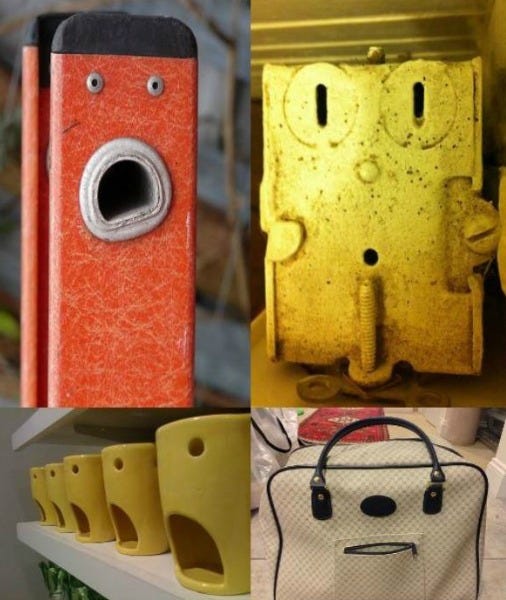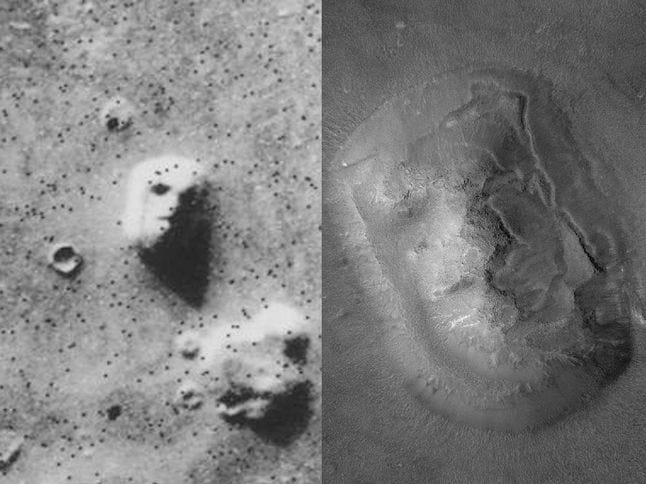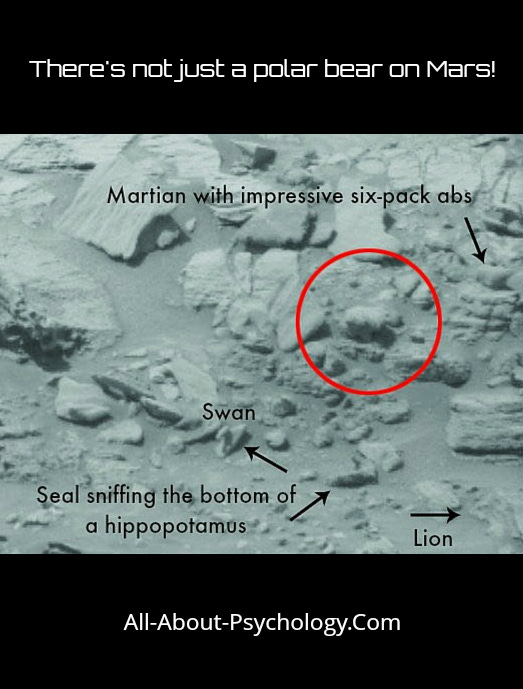Face perception is one of our most fundamental human abilities, essential not only for recognizing family and friends but also for navigating our social world. From the moment we’re born, our brains are ‘wired’ to seek out and respond to faces. Research has shown that newborns, within hours of birth, demonstrate a preference for face-like patterns over other shapes, suggesting that our attraction to faces is an instinctive behavior—a survival mechanism embedded in our neural circuitry.
This natural inclination to detect faces in our surroundings is part of a broader phenomenon known as pareidolia, where our brains identify familiar patterns in random or ambiguous stimuli. From the “man in the moon” to faces glimpsed in clouds or everyday objects, pareidolia reveals just how powerfully our minds are tuned to recognize meaningful forms, even where none exist.
This face-detection system remains active and influential throughout our lives, often operating at a subconscious level. Evolutionarily, this makes sense: in ancient environments, the ability to quickly recognize faces (even potential threats) was vital for survival.
An old-time hominid would be liable to pay dearly, had s/he failed to recognize a pair of glowing dots in the bush at dark as the eyes of a predator, mistaking it for two fireflies”
(David Navon)
In the modern world, however, pareidolia is typically restricted to unexpected and playful experiences, as we project familiar shapes onto the inanimate world around us.
Let’s see if we can trigger your face detection system!
What Is It About Mars?
One of the best known examples of pareidolia is the "face on Mars" captured in 1976 by NASA's Viking 1 orbiter, this image showed what appeared to be a giant face on the Martian surface, complete with eyes, a nose, and a mouth. The public was captivated, and the image quickly became a focal point for speculation about extraterrestrial life. However, this mysterious "face" was later revealed to be an illusion. High-resolution images from a subsequent NASA mission in 2001 showed the Martian formation in much clearer detail, shattering the illusion and revealing the "face" as a natural rock formation.
Ever since NASA's twin exploration rovers, landed on Mars (January 3 and January 24, 2004) and began beaming back images, people have claimed to see all manner of things on the red planet — including, as suggested in the following video, a polar bear!
In the name of psychological science, I decided to spend some time surveying the Martian landscape near where the polar bear was spotted — and guess what? That bear is not alone!
Religious Pareidolia
There are numerous examples of random stimuli inducing religious pareidolia — from people claiming to see the figure of Jesus Christ in the flames of Notre Dame, to the most famous example of all: a toasted cheese sandwich reportedly bearing the image of the Virgin Mary, which sold on eBay for $28,000! You can get further details on this story and see a picture of this very expensive lunch item by Clicking Here.
Pareidolia Research
"Why and how do we tend to see faces in objects that have constituent parts resembling those of a face? Is it because our brains are hard-wired to detect the presence of a face as quickly as possible, or is it a later cognitive construction or interpretation?"
This was the central question investigated by Nouchine Hadjikhani and colleagues as part of their pareidolia-related research investigation. You can read their published findings in full by Clicking Here.
Pareidolia Picture Gallery
Hope you’ve found this an interesting read. I’ll leave you with some more great pareidolia pictures.





Don't forget to visit the All About Psychology Amazon Store to check out an awesome collection of psychology books, gifts and T-shirts. Sales help support All-About-Psychology.Com, a website providing free and comprehensive information and resources for psychology students and educators since 2008.
Stay in the know! The All About Psychology newsletter is your go-to source for all things psychology. Subscribe today and instantly receive my bestselling Psychology Student Guide right in your inbox.
Upgrade to a paid subscription and also get the eBook version of my latest book Psychology Q & A: Great Answers to Fascinating Psychology Questions, as well as regular psychology book giveaways and other exclusive benefits.












I wrote a children's book focused on paredolia! Moody Mood Cars (for ages 4-8) features gorgeous photos of vintage cars by Michael Furman, expressing a range of feelings from angry to excited. The text goes, "Free-wheeling! Full of feeling! Traveling near and far. Honk if you see me. I'm a Moody Moody Car!"
https://bookshop.org/p/books/moody-moody-cars-michael-furman/17508200?ean=9781433836992